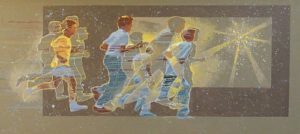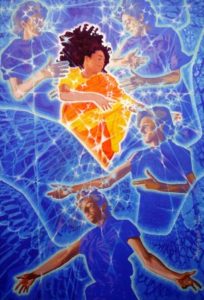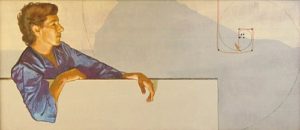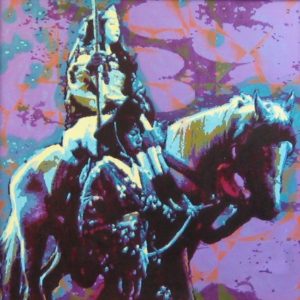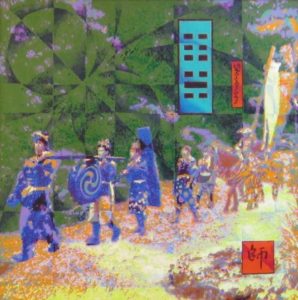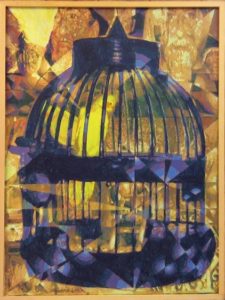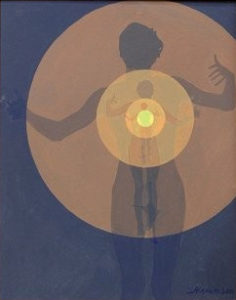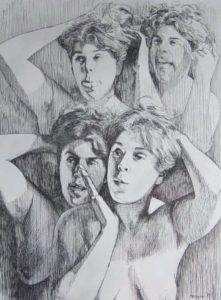Hexagram 7: The Army: Good Fortune (1988). Soldiers march in order and harmony through a gentle snow of cherry blossom petals, a symbol of good fortune. Stevenson says good fortune depends on self-discipline to bring order out of chaos. With dauntless courage, one masters the self as a general masters his troops, by constancy, dedication and focus. The army needs perseverance and a strong man. Good fortune without blame. From Hexagram 7, Shi, The Army. I Ching: Or, Book of Changes, Wilhelm-Baynes translation, Bollingen Series, Princeton University Press. The Chinese character (red box, lower right) is Shi, the courageous and constant military leader. Acrylic on canvas (24” x 24”). Hand signed: Stevenson. Stevenson/Leach Studios. SKU: CS198808*
